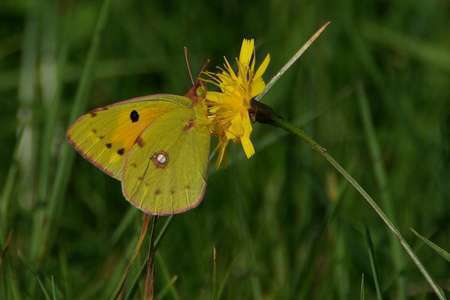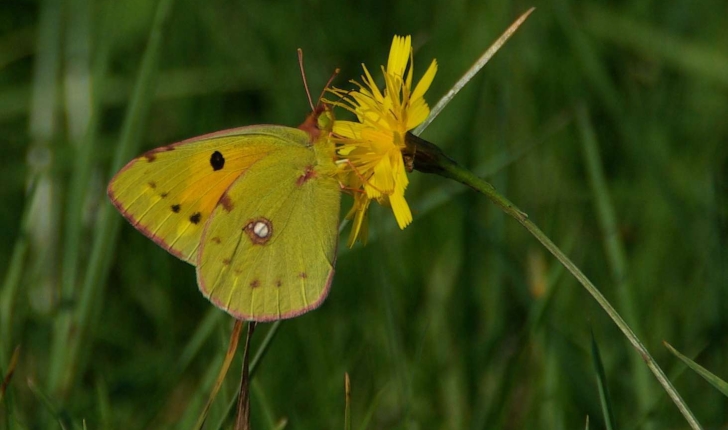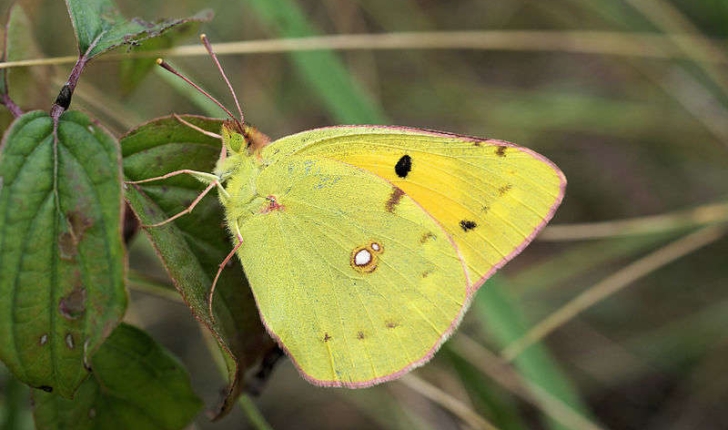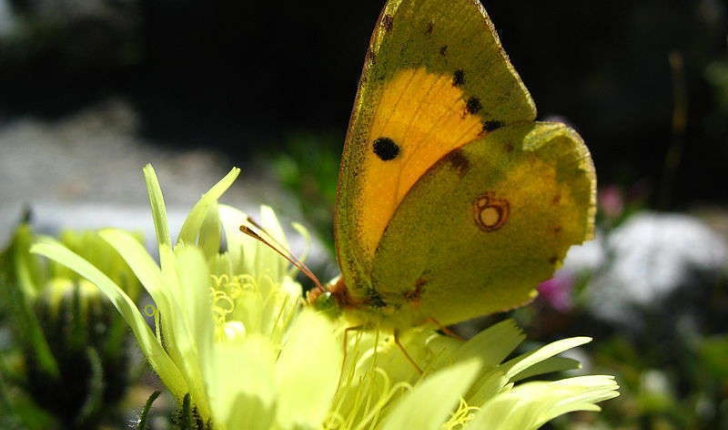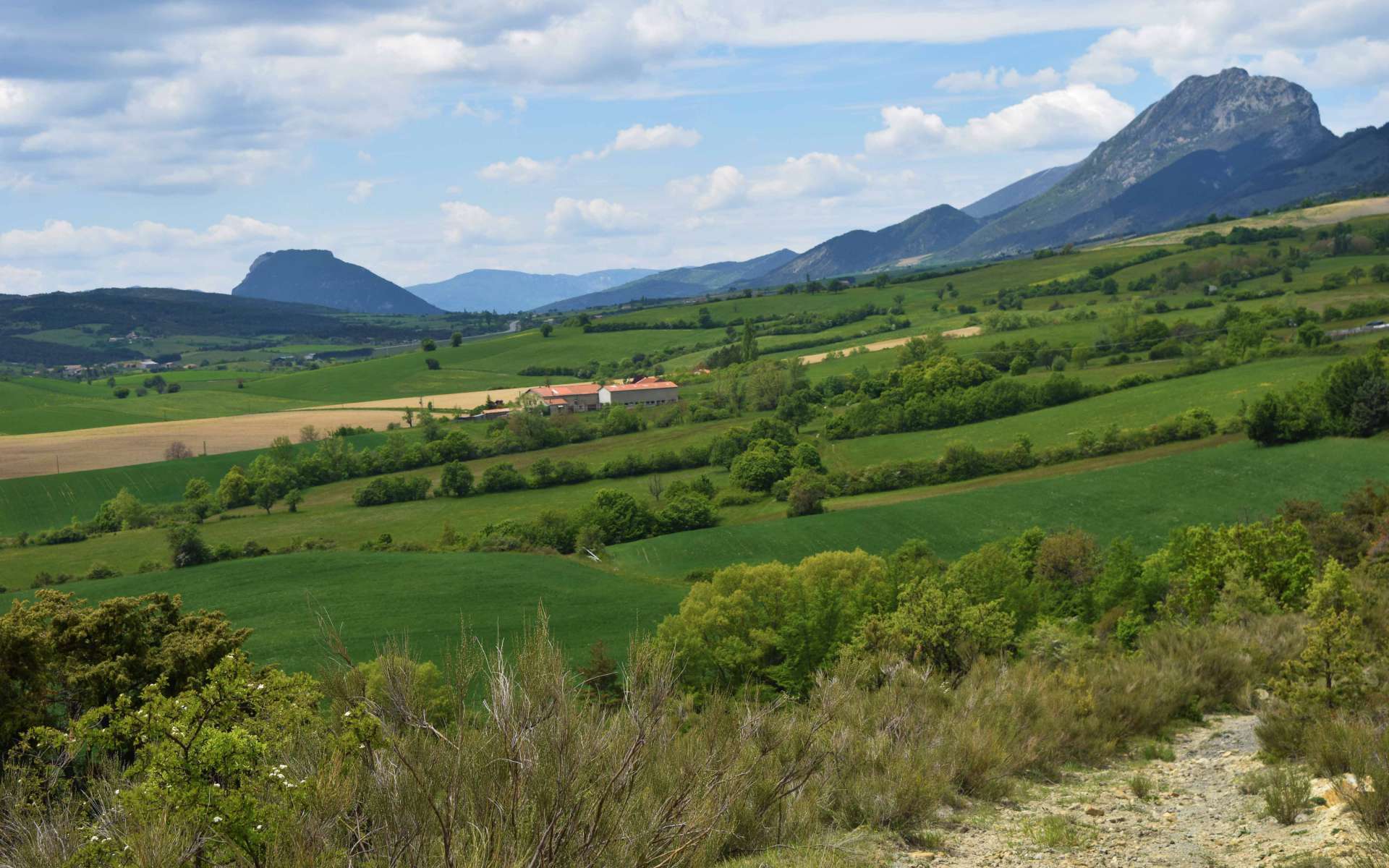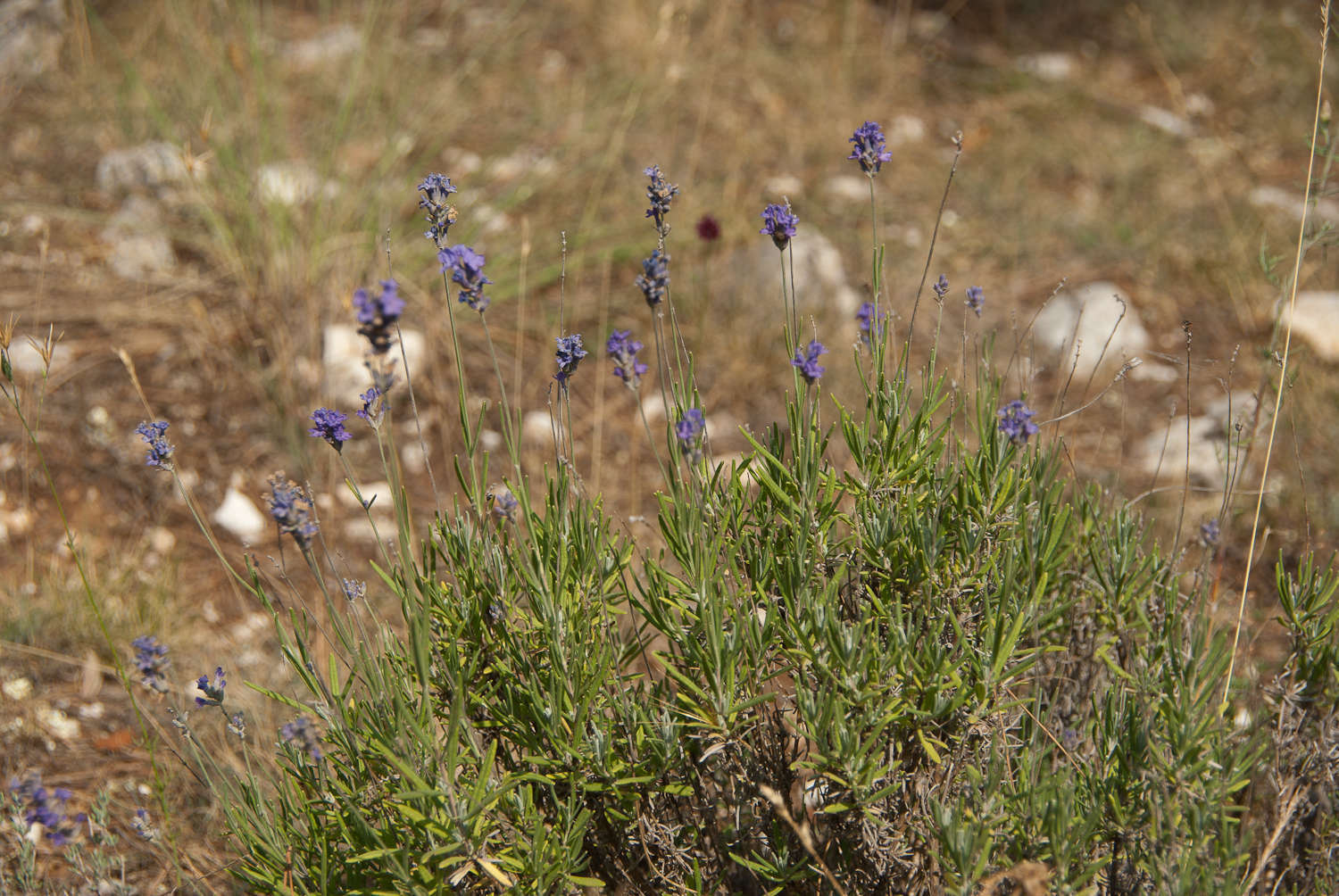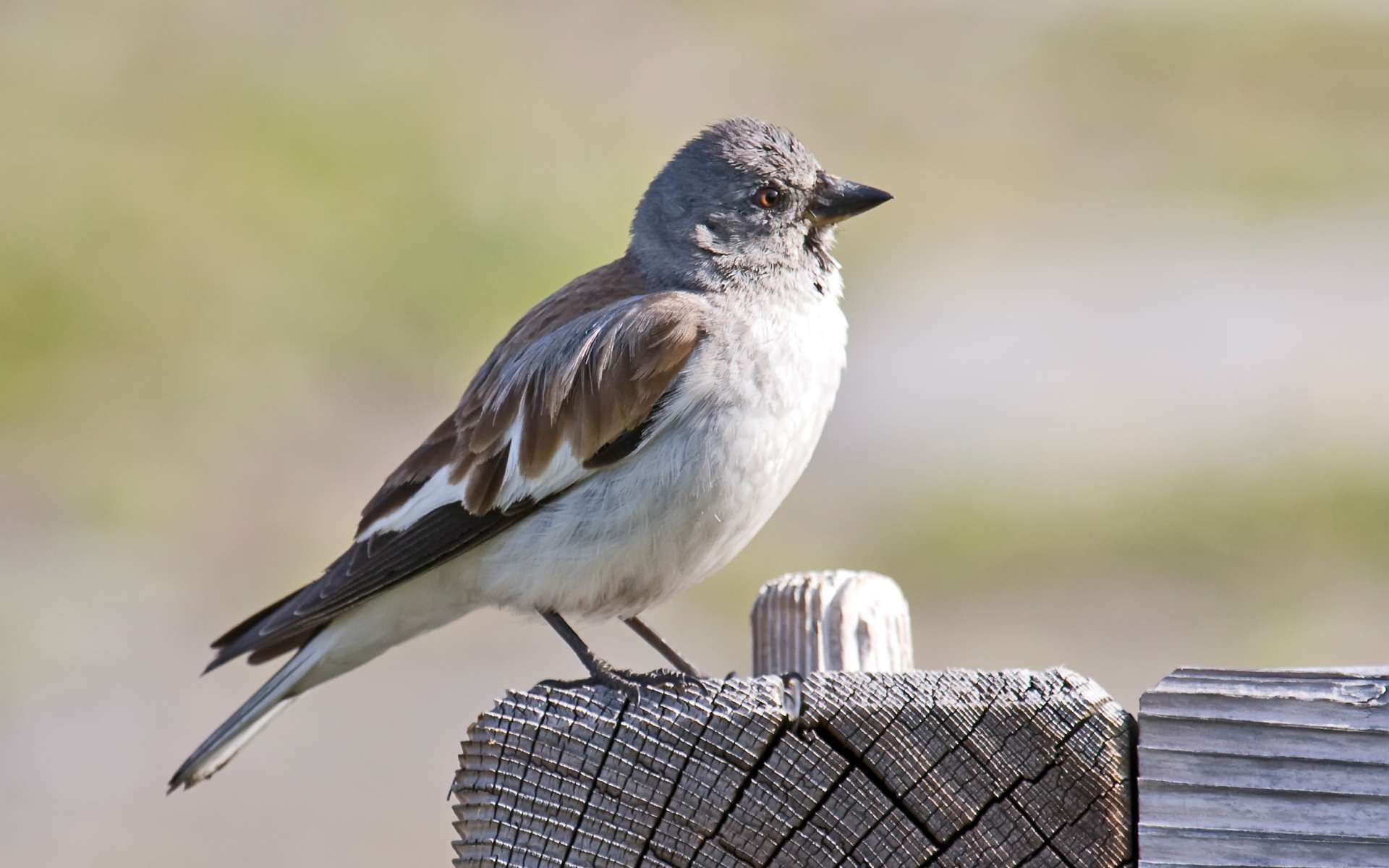
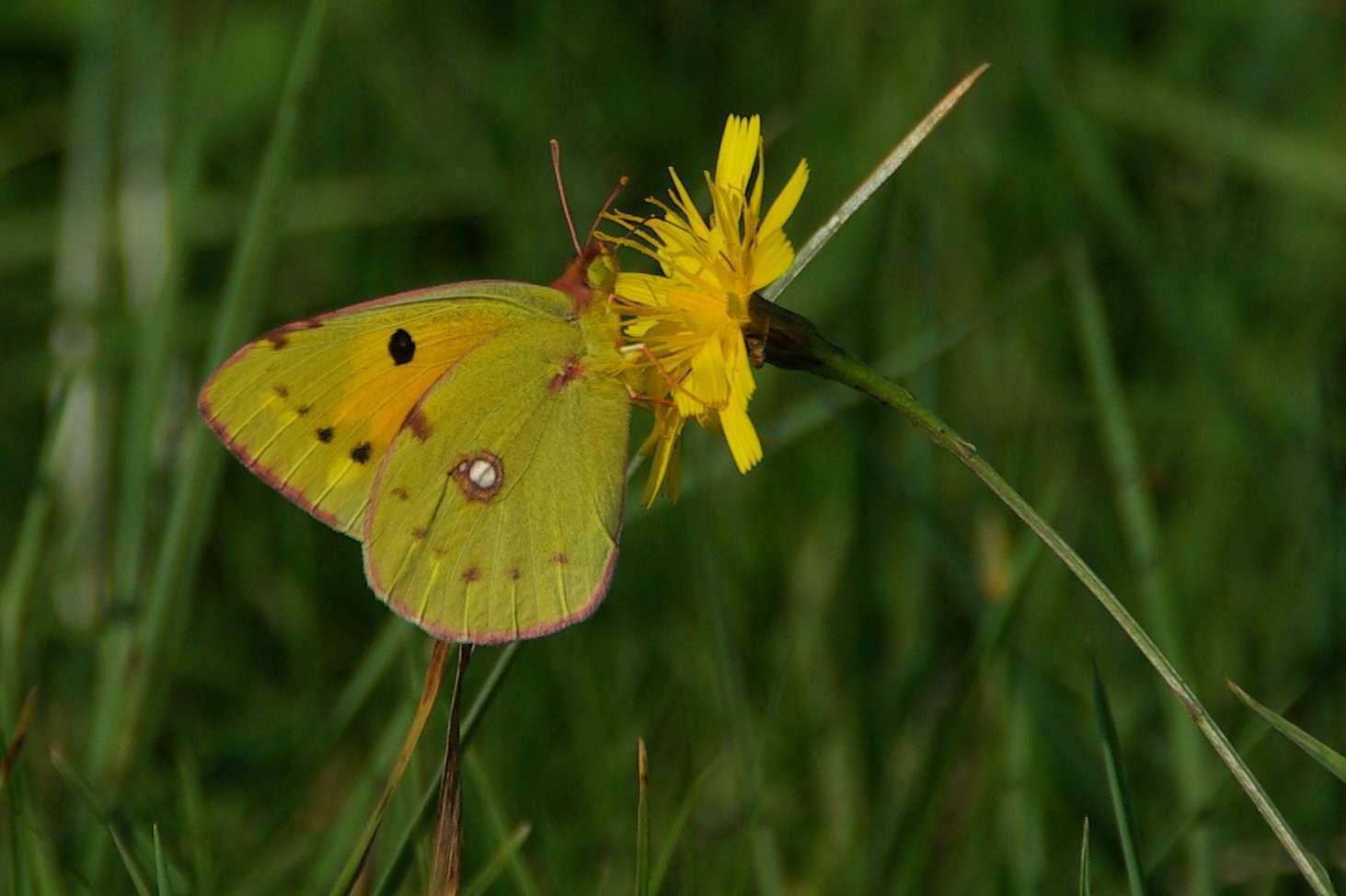
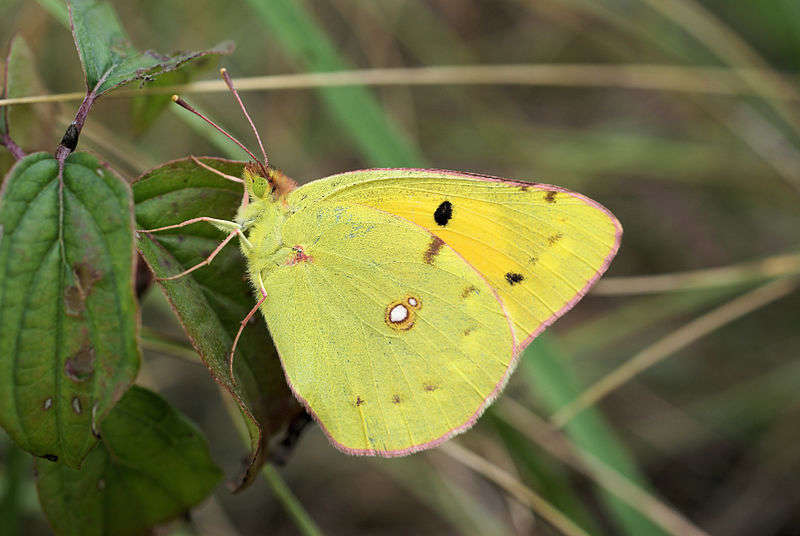
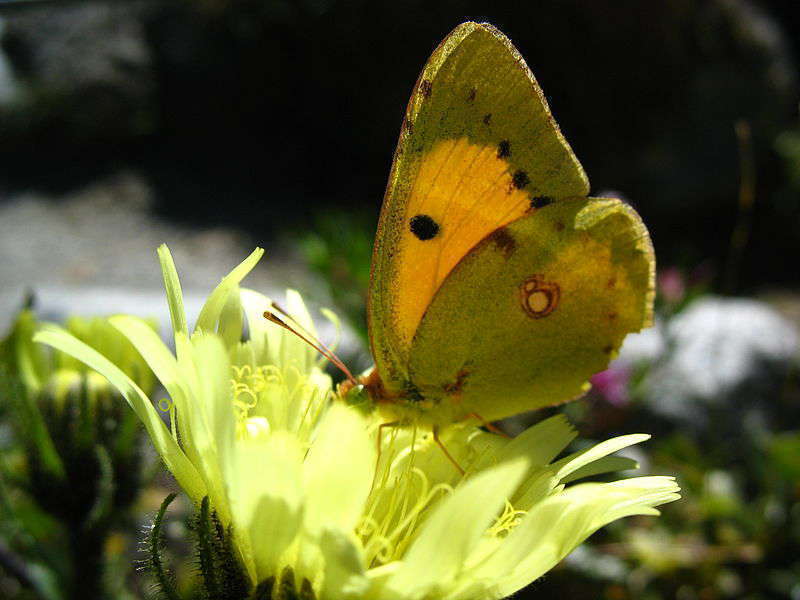
Les soucis ont un vol très rapide. Ils se posent toujours les ailes fermées. Leur envergure varie de 35 à 50 mm avec un verso jaune-orangé, bordé de noir. Le revers est jaune d'or avec des taches noires sur l'aile antérieure. Les œufs, d'abord jaune clair puis roses, donnent des chenilles vertes à poils blanchâtres et ornées d'une bande blanche à points orange et noirs sur les flancs. La chrysalide est vert vif avec une raie jaune. L'hiver, c'est une chenille. Après sa métamorphose il peut voler d'avril à octobre.
